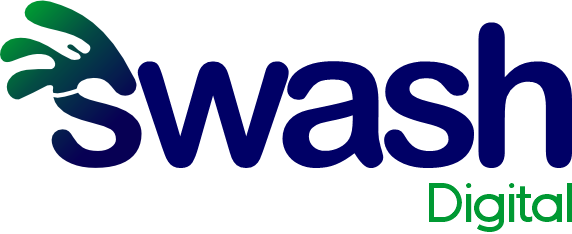You have a game-changing idea. It’s the kind of concept that keeps you up at night, scribbling notes on your phone and sketching user flows on napkins. But between that spark of genius and a profitable business lies a treacherous chasm filled with what we call the “startup graveyard”—countless products that were meticulously built for a year, cost hundreds of thousands of dollars, and launched to the sound of crickets.
What if you could bypass that graveyard entirely?
What if you could take your idea, validate it, build a focused product, and get your first paying customer in the next 60 days?
It’s not a fantasy. It’s a strategic necessity in today’s fast-moving market. Speed isn’t about cutting corners; it’s about disciplined focus and intelligent validation. This guide will provide you with the exact, week-by-week playbook to do just that.
The Mindset Shift: Why 60 Days is the New Standard
For years, the startup mantra was “build it and they will come.” Founders would spend 12-18 months in a cave, burning through cash to build a “perfect” product loaded with features, only to discover their core assumptions were wrong.
The market has shifted. Today, capital efficiency is king, and market feedback is the most valuable currency. A 60-day launch cycle isn’t an arbitrary deadline; it’s a framework built on a powerful principle: Validation Velocity.
Validation Velocity is the speed at which you can prove that real people will pay real money for your solution. The faster your velocity, the higher your chance of success. A rapid MVP launch is your engine for achieving it.
The 60-Day MVP Launch Playbook
This playbook is broken into four distinct, two-week sprints. Each phase is designed to de-risk the next, ensuring you’re always building on a foundation of real-world evidence, not just hopeful assumptions.
Phase 1: Deep Discovery & De-Risking (Days 1-14)
Goal: To fall in love with the problem, not your solution. Before you write a single line of code, you must prove that the problem you’re solving is a painful, urgent “hair-on-fire” issue for a specific group of people.
Actionable Steps:
Define Your One-Sentence Problem Statement: Write it down. “My target customer, [who], is struggling with [problem] because [reason].” If you can’t articulate this clearly, you’re not ready.
Identify Your Ideal Customer Profile (ICP): Get hyper-specific. Not “small businesses,” but “plumbing companies in North America with 5-10 employees who still use paper invoicing.” This focus is your superpower.
Conduct 15-20 Customer Discovery Interviews: This is non-negotiable. Find people in your ICP and talk to them. Do not pitch your idea. Your only job is to listen and learn. Ask questions like:
“Tell me about the last time you dealt with [problem].”
“What have you tried to do to solve this? What did you like or dislike about those solutions?”
“How much is this problem costing you in time or money?”
Map the User Journey: Based on your interviews, map out the customer’s current, painful process. Identify the exact moment of maximum frustration. This is where your MVP will intervene.
Is this discovery phase feeling overwhelming? It’s the most critical and often the most difficult step. A single wrong assumption here can derail your entire project. Schedule a free, no-obligation MVP Strategy Call with us, and we’ll help you build a rock-solid foundation.
Phase 2: Solution Design & Prototyping (Days 15-30)
Goal: To design the smallest possible solution that solves the most painful part of the problem you validated in Phase 1.
Actionable Steps:
Define the ONE Core Feature Loop: Your MVP should do one thing perfectly. For Instagram, it was posting a filtered photo. For Dropbox, it was syncing a single file. What is the one action a user can take that delivers immediate value? That’s your entire focus.
Create Low-Fidelity Wireframes: Grab a pen and paper or use a simple tool like Balsamiq. Sketch out the 3-5 screens required to complete your core feature loop. No colors, no logos, just boxes and lines.
Build a Clickable Prototype: Use a tool like Figma or Marvel to turn your wireframes into a simple, clickable prototype. It doesn’t need to be beautiful, but it must be functional enough to test the user flow.
Get Feedback on the Prototype: Go back to 5-10 of the people you interviewed in Phase 1. Give them the prototype and a simple task. Watch them use it without saying a word. Their confusion is your roadmap for improvement. Iterate on the prototype until the core flow is intuitive.
Phase 3: The ‘Minimum’ Build Sprint (Days 31-50)
Goal: To build and test a functional, secure, and usable version of only the core feature loop you designed in Phase 2.
Actionable Steps:
Make the Right Tech Stack Decision: Speed is key. Your choice of technology now is about getting to market, not scaling to a billion users.
No-Code/Low-Code: For many marketplaces, internal tools, and simple SaaS apps, platforms like Bubble, Webflow, or Retool can build a fully functional MVP in a fraction of the time.
Efficient Frameworks: If custom code is necessary, lean on modern, component-based frameworks like React and Next.js, which allow for rapid development.
Practice Ruthless Prioritization: This is where most MVPs fail. Someone will say, “We should also add…” The answer is always no. Create a feature backlog and put every single non-essential idea in a list called “Phase 2.” Protect your 60-day timeline at all costs.
Focus on the “Happy Path”: Your MVP only needs to work perfectly when the user does everything right. Don’t waste time building elaborate error states or edge-case features. Just make the core loop solid.
Phase 4: Launch, Feedback & First Revenue (Days 51-60)
Goal: To get your MVP into the hands of your first users and successfully charge one of them for it.
Actionable Steps:
Onboard Your “Founding Members”: Your first users should be the people you interviewed in Phase 1. They are already invested in the problem. Give them a special “founding member” deal in exchange for their honest feedback.
Set Up Simple, Actionable Analytics: Don’t get lost in data. Install a tool like Hotjar or Mixpanel to answer two questions: 1) Are users completing the core feature loop? 2) Where are they getting stuck?
Ask for the Sale: This is the moment of truth. From Day 1, you must charge for your product. Even a small price validates that you’ve built something of value. A paying customer is the only real proof your business is viable.
Create a Formal Feedback Loop: Don’t rely on random emails. Set up a dedicated Slack channel, a simple feedback form, or schedule 15-minute weekly check-ins with your first users. Their feedback is the blueprint for your next development sprint.
The Biggest Pitfalls on the 60-Day Sprint (And How to Avoid Them)
Feature Creep: The relentless urge to add “just one more thing.”
Solution: Appoint a “Timeline Guardian” whose sole job is to say “no” to any feature not in the original spec.
Analysis Paralysis: The fear of launching something imperfect.
Solution: Embrace Reid Hoffman’s advice: “If you are not embarrassed by the first version of your product, you’ve launched too late.”
Building in a Vacuum: Skipping the customer discovery phase because you’re “sure” you know what they want.
Solution: Trust the process. The 3 hours you spend on interviews will save you 3 months of wasted development time.
"It’s not a fantasy; it’s a strategic necessity. For years, the startup mantra was 'build it and they will come,' but that era is over. Today, capital efficiency is king, and market feedback is the most valuable currency. A 60-day launch cycle isn't an arbitrary deadline; it's a framework built on a powerful principle: Validation Velocity—the speed at which you can prove that real people will pay real money for your solution. The faster your velocity, the higher your chance of success."
Swash Digital
Your Journey from Idea to Revenue Starts Now
Launching an MVP in 60 days is intense. It requires discipline, focus, and a willingness to prioritize market feedback over your own assumptions. But the reward is immense: you dramatically de-risk your venture, conserve your capital, and start building a real business based on what customers actually want and are willing to pay for.
You don’t have to walk this path alone. Navigating the trade-offs between speed, cost, and quality is what we do every day.
The difference between a dream and a business is a plan. Let’s build yours.
Ready to turn your idea into your first paying customer? Schedule your free, no-obligation MVP Roadmap Session with a Swash Digital strategist today. We’ll help you map out your first 60 days and provide an actionable plan to get you to market faster and smarter.




